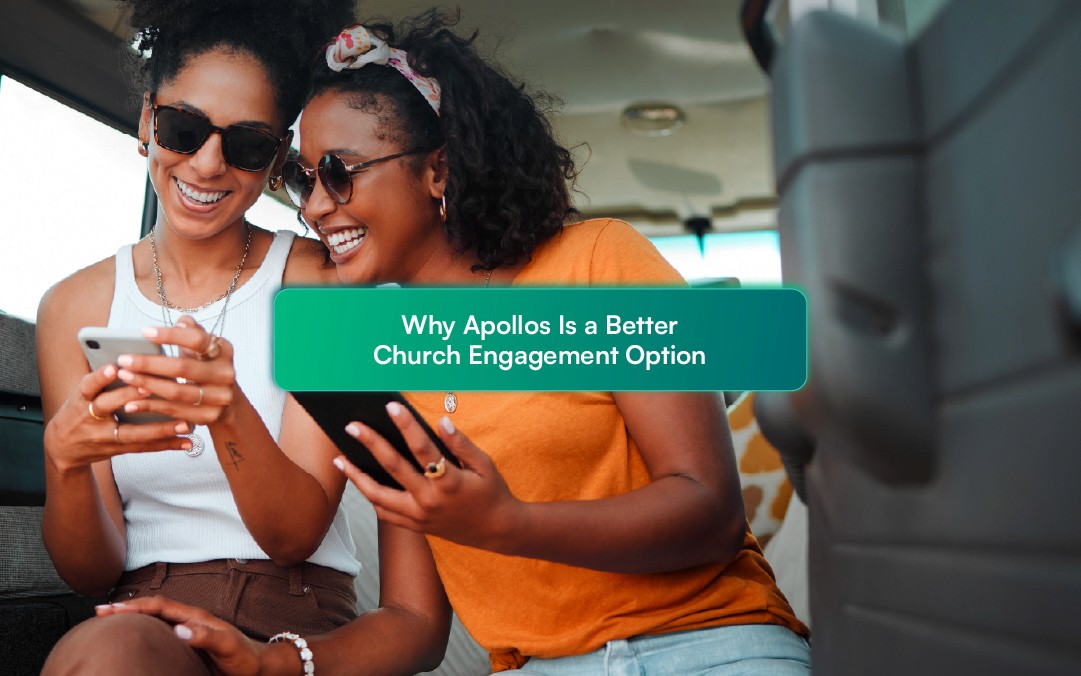
A Force for Good or Bad?
The Role of Technology in Faith
Technology has revolutionized the way we live, work, and communicate, but what does it mean for the church? Can it be a tool for growth and connection, or does it pull us away from the heart of community and discipleship? With the right intentionality, technology can fulfill its potential to connect, disciple, and strengthen the global church, but vigilance and purpose must guide its use.
The Potential of Technology in the Church
Connecting Across Borders
Technology has broken down physical and geographical barriers, enabling the church to unite in unprecedented ways. Sermons, Bible studies, and prayer gatherings are no longer confined to a single location. Through apps, livestreams, and online communities, the Word of God reaches even the most remote areas of the world.
“There is neither Jew nor Gentile, neither slave nor free, nor is there male and female, for you are all one in Christ Jesus.” (Galatians 3:28)
Showcasing the Diversity of God’s Creation
Through technology, we gain perspectives that celebrate the diversity of God’s people and creation. From cultural expressions of worship to global conversations about faith, we see the beauty of God’s handiwork in new ways. Technology allows us to witness this diversity and grow in unity as the body of Christ.
Expanding Access to God’s Word
Technology ensures that Scripture is no longer limited by physical distribution. Bible apps, digital devotionals, and online libraries provide instant access to God’s Word in hundreds of languages, making spiritual growth possible for anyone with an internet connection.
The Dangers of Technology
The Loneliness Epidemic
While technology connects us, it can also isolate us. Social media, once designed to foster connection, has often contributed to division and loneliness. Studies show that excessive social media use correlates with mental health struggles, highlighting the importance of using digital tools with care.
Misplaced Intentions
Social media platforms started with noble intentions of fostering connection. However, algorithms focused on likes, shares, and individual gain have often led to self-promotion and division rather than community and unity. What if the focus had been on serving the community rather than the self? The result could have been deeper, more meaningful relationships.
Created to Create: Advancing with Vigilance
God made us in His image, as creators. This divine creativity drives technological advancements. From tools that spread the Gospel to innovations that solve real-world problems, we reflect our Creator when we innovate. However, with this power comes responsibility.
“So God created mankind in his own image…male and female he created them.” (Genesis 1:27)
The Balance of Creation
As humans, we create both tools that help us thrive and tools that harm us. This duality highlights the need for vigilance. Advancing technology in the church requires intentionality—ensuring every innovation aligns with God’s purpose and builds His kingdom.
Breaking Down Silos: Technology for Community
Churches today face a significant challenge: siloed ministries and compartmentalized lives. People often feel disconnected from their church communities outside of Sunday services. Technology can help shift this dynamic by fostering seven-day-a-week engagement and deeper connections within the congregation.
Examples of Engagement Through Technology
The Apollos App provides tools to increase engagement, such as digital prayer chains, daily scripture prompts, and community forums. Churches using these tools have seen not only numerical growth but also spiritual depth within their congregations.
The Mission of Daily Connection
The early church gathered daily, building a community that met spiritual, emotional, and physical needs. By leveraging digital tools, modern churches can mirror this rhythm of daily discipleship, providing opportunities for congregants to stay connected to God and one another throughout the week.
“They devoted themselves to the apostles’ teaching and to fellowship, to the breaking of bread and to prayer…Every day they continued to meet together in the temple courts.” (Acts 2:42, 46)
Technology as a Cultural and Missional Tool
Meeting People Where They Are
Jesus met people in their context, addressing their physical, emotional, and spiritual needs. Technology allows the church to do the same—meeting congregants on their phones, in their homes, and in their daily routines. From prayer notifications to guided devotions, digital tools bring the church into everyday life.
“Go into all the world and preach the gospel to all creation.” (Mark 16:15)
Setting Culture Through Technology
The church is called to be a culture setter, influencing society with the Gospel. By embracing technology, churches can shape a culture of prayer, discipleship, and connection. For example, Crossroads Church documented over 4 million prayers in 2024 through the Apollos App, demonstrating a tangible culture of prayer and daily faithfulness.
The Call to Intentionality
Technology, like any tool, reflects the intentions behind its use. For the church, it is not about replacing in-person interactions but enhancing accessibility and engagement. The goal is to move from a one-day-a-week model to a seven-day-a-week rhythm, mirroring the early church’s daily gatherings and fostering a deeper connection to God and community.
“And let us consider how we may spur one another on toward love and good deeds, not giving up meeting together…but encouraging one another.” (Hebrews 10:24-25)
As we navigate advancements in technology, the church has an opportunity to steward these tools for God’s glory—connecting people to His Word, His creation, and His mission. The question is: How will we use these tools to foster connection, community, and growth in the body of Christ?
Product
Why Apollos Is a Better Church Engagement Option

Apollos
Product
Apollos Tap: Tap Technology, NFC Tags, and App Clips Explained

Apollos
Product
Apollos vs Alternative Church Technology: Customer Support and Innovation Win Out

Apollos
Product
Apollos: Church Technology Made Easy

Apollos
Culture
How Churches Can Use Technology to Build Daily Spiritual Habits

Apollos
Strategy
From the Church, For the Church: Why Apollos is Taking a Different Path in Church Tech

Tyler Vance





